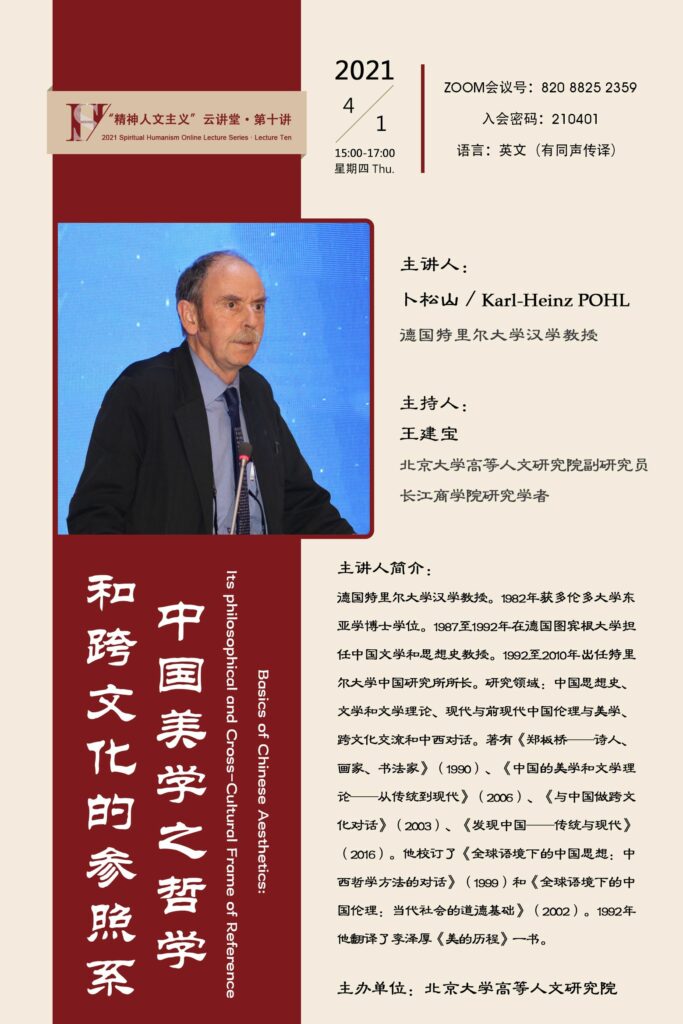Online lecture on Chinese aesthetics by Karl-Heinz Pohl, 1.4.2021, Bejing, Tu Weiming Forum

In this lecture, which will be in English with English-Chinese bilingual PPT slides, Karl-Heinz Pohl (卜松山) looks at the “Basics of Chinese Aesthetics – Its Philosophical and Cross-Cultural Frame of Reference”.
For Pohl, a “symbolic and aesthetic orientation” (references to literature, art, religion and philosophy) is considered to be at the base of cultural identity; hence, art and aesthetics form particularly significant parts of culture. In his presentation, he will take a closer look at such culturally specific features of Chinese aesthetics. Linguistic aspects and the philosophical background of Chinese aesthetics will be elucidated as follows:
1. The aesthetic potential of Chinese language and writing: Pictorial features; facility to form parallel structures.
2. Yin-Yang-Thought: Seeking balance; considering things in contexts; harmonizing opposites.
3. Confucianism: The nexus of art and morality – literature and art as a reflection of the character of the poet/artist (诗/书/画如其人); poetry as a way of expressing (moral) intent (诗言志); literature as a vehicle for the expression of the (moral) “Way” (载道).
4. Daoism: Poetic expression through images and allusion/allegory (兴 and 言外之意); artless art; essence of artistic creativity; Kung-fu (功夫): practice leading to perfection.
5. Buddhism: Dialectics of form (色) and emptiness (空); the “Dharma of poetry”, i.e. its “methods” or “rules” (法), to be aligned with “enlightenment” (悟 ), understood – aesthetically – as “intuitive mastery” of the art; concepts derived from Yogacara Buddhism (法相宗: 意境 – artistic conception, and境界 – aesthetic consciousness).
Pohl: “Chinese and Western aesthetics appear to be worlds apart, and there seems to be – historically – quite some misunderstanding in the mutual perception, based on ignorance, particularly on the Western side, such as Hegel’s comments. Without a knowledge of the different philosophical frame of reference, an appreciation of the respective forms of art can only be superficial.”